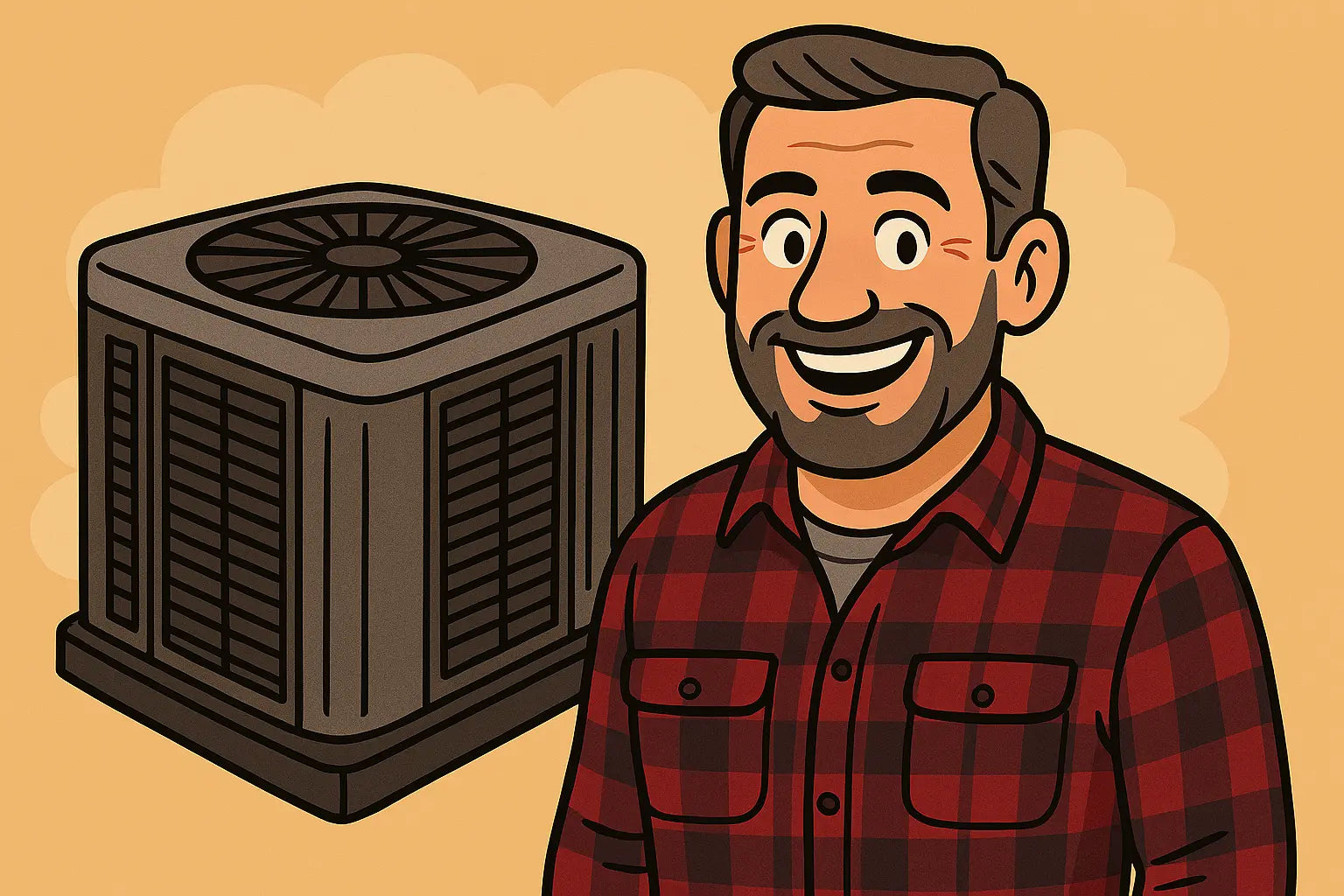Hey Again!
Hey there, it's Mike again. You know what drives me up the wall? Watching good folks sweat bullets in their living rooms because someone botched an AC install—or worse, spent thousands fixing something that should’ve cost $40 and a screwdriver. So I figured it’s time I laid it all out: how to install a central AC right and how to fix it when it ain't playing nice. Let’s get started, and don't worry—I’ll keep the tech-speak to a minimum 😏.
What a Central Air System Actually Does (and Why It’s Not Just Fancy Box Fans)
A central air system cools your whole home using ductwork and a combo of indoor and outdoor components that move air and refrigerant around in a loop. Most setups use a split system: you’ve got a condenser outside, an evaporator coil inside, and refrigerant lines connecting the two.
Want to get deeper into how the cooling cycle works and why you need more than just a cold coil to stay comfy? Take a look at this solid breakdown from the folks at Energy.gov.
Step-by-Step: How to Prep and Install Your Central AC
-
Figure out the right size
No, “3 tons sounds good” isn’t enough. You’ve got to calculate the load using a Manual J method. Too big and you waste money, too small and you sweat. Pro installers do this math before quoting anything. -
Prep the site
Outdoor condenser needs at least 2 feet clearance on all sides. You’ll also need a level pad, electrical access, and to stay clear of dryer vents and leaky gutters. -
Set the equipment
That means installing the indoor air handler or furnace with the coil, running the refrigerant lines, and installing the thermostat. If you’re working with an older setup, it might need a full wiring refresh. -
Hook up power and refrigerant
If you’re working with new refrigerants like R-32 (which I recommend), you'll need to be careful with pressure testing and charging. Don't cheap out on vacuuming the lines or weighing the charge. -
Test and tweak
Fire it up and measure airflow, temp drop, and static pressure. Make sure no one "eyeballs" the charge or skips checking duct sealing. That's how systems fail early.
A more detailed walk-through can be found at This Old House.
Common AC Installation Mistakes That’ll Cost You Big
• Skipping the sizing step – It’s not just about square footage. You need to factor in insulation, sun exposure, windows, and more.
• Placing the outdoor unit in direct sun – Not only will this make it run hotter, it’ll die faster and use more power doing it.
• Bad wiring or fuse sizing – I’ve seen brand new units fry because someone used the wrong breaker.
• Improper refrigerant charging – Too much? You can blow the compressor. Too little? It’ll freeze up. Use a scale and a set of gauges—don’t guess.
• No airflow balancing – Your duct system needs to be tuned or at least checked, or you’ll end up with one room freezing and another roasting.
For a solid explanation of what can go wrong (and why), check out this article from HVAC.com.
Mike’s Favorite Troubleshooting Tips for Everyday AC Issues
-
Warm air coming out of vents
Check your thermostat settings and the air filter. If your coil is frozen, it might be a clogged filter or low refrigerant. If the compressor outside isn’t running, it could be a capacitor or contactor. -
Noisy unit
Buzzing or clanking? Could be the fan blades, a loose panel, or the compressor. I once found a squirrel nest in a condenser—true story. -
Short cycling (starts and stops constantly)
Bad thermostat placement, poor refrigerant charge, or oversized equipment. If your AC only runs for two minutes at a time, something’s off. -
Leaks or puddles
Your drain line might be clogged or disconnected. Easy fix—blow it out or snake it, and seal it up.
Need a full cheat sheet for this stuff? I like this quick-glance list from Smart AC Solutions.
Maintenance Tips to Keep You Out of Trouble
• Change filters every 1–2 months
• Keep the outdoor coil clean (use a garden hose—no pressure washer!)
• Check your thermostat batteries every spring
• Clear the drain line once a year with vinegar or compressed air
• Schedule a tune-up before summer hits
Most breakdowns I see? Easily preventable with the list above. And don’t forget—poor airflow kills ACs faster than anything.
For a helpful visual on the maintenance timeline, check out the infographic from Carrier’s official blog.
Final Thoughts: DIY vs. Hiring a Pro
Look—I get it. You want to save a few bucks. And for the right person with time, tools, and a bit of know-how, DIY installs or repairs can work. But there’s a reason pros exist: we know the codes, we’ve seen the worst-case scenarios, and we won’t void your warranty.
And if you’re working with refrigerant? Please don’t mess around. That stuff isn’t just cold—it’s regulated. You can’t legally buy it or handle it without certification. If you do one thing today, remember this: safety first, wallet second.
Mike's Wrap-Up
Alright, you made it to the end—nice work 💪. Whether you're getting ready to install a central AC system or just tired of playing thermostat detective every summer, the goal's the same: stay cool without getting burned (financially or literally).
If you’re looking to upgrade or replace your system, don’t just wander the internet aimlessly—start where the pros start. The Central Air Conditioning Systems collection at The Furnace Outlet has some of the best units out there, ready to ship, and built for long-haul performance.
Curious about what size central AC you need? Visit my guide: Central AC Sizing 101.
Take your time, get the right size, and don’t skimp on install quality. Your future self (and your electric bill) will thank you.
Catch ya next time—stay frosty.
—Mike 🧊👊







